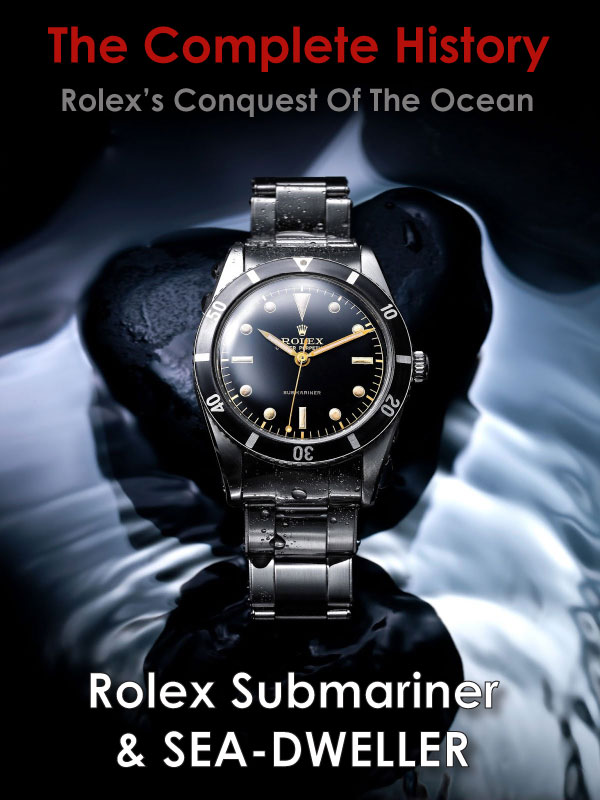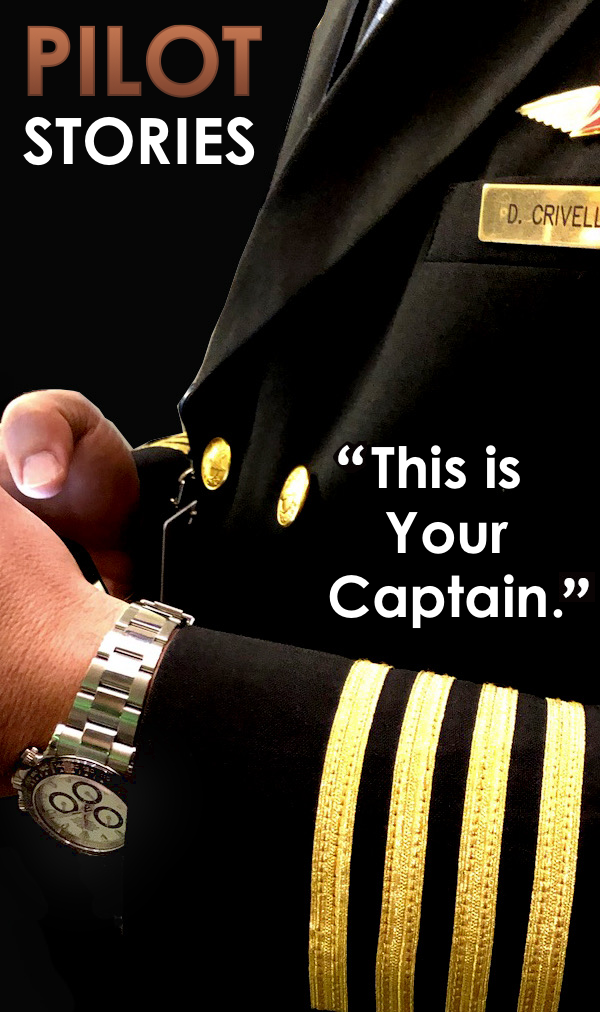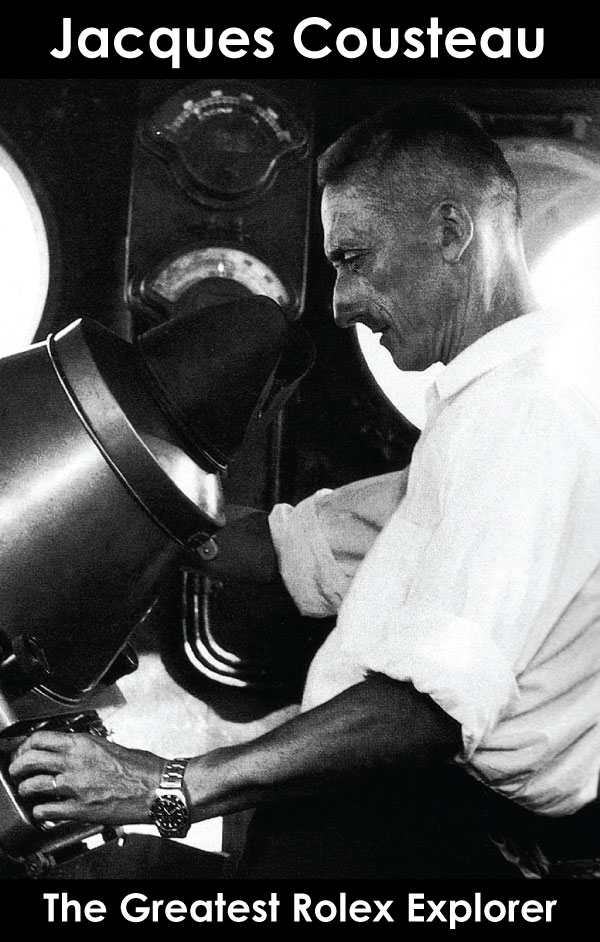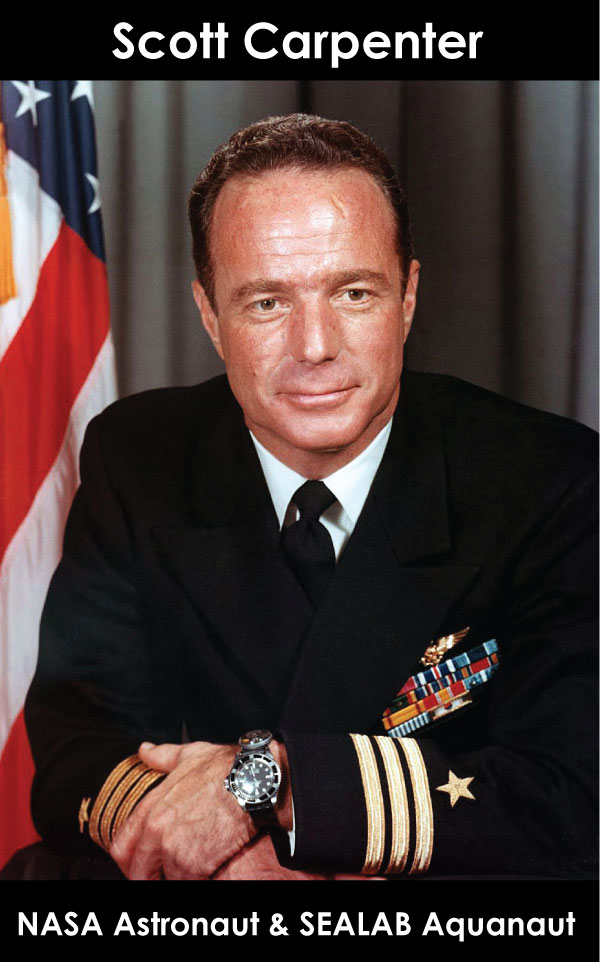Jacques-Yves Cousteau
The Greatest Explorer
[Part 2 of 5]
Project Conshelf
From Submariner to SEA-DWELLER
In September 1962, Jacques Cousteau immersed his Calypso crew into their most ambitious adventure to date known as the Conshelf Project. The Conshelf project was the brainchild of a U.S. Navy Medical Corps., Captain named Dr. George Bond. Dr. Bond conceived a new method of diving known as the "saturation method" which became know as "saturation diving."
Saturation diving created an underwater habitat where the divers could live in an underwater house/structure/habitat so they could work on the sea floor, without having to decompress by coming up to the ocean's surface after each dive.
Dr. Bond submitted his plan to build this underwater habitat for saturated divers to the U.S. Navy and the U.S. Navy initially rejected the idea–so Dr. Bond submitted his idea to Jacques Cousteau and his Calypso diving team–and after careful evaluation Cousteau decided to undertake the project.
Conshelf I
Conshelf I [September 1962] Location: Frioul Island, Marseille, France
Conshelf I got underway in September of 1962, and according to Jacques Cousteau, the objective was "Two men living for one week in a small building at a depth of 37 feet and working several hours a day at 65 feet." The Conshelf I structure was essentially a huge drum about the size of an industrial shipping container that was ballasted with an open hatch for the divers to enter and exit the underwater house.
In the photo below we see Conshelf I's barrel shaped habitat being tested for leakage before being submerged for the experiment. I may be wrong, but I think I recognize fellow DEEP-SEA Submariner, Jacques Piccard up on the top deck, leaning back, in the white shirt with dark slacks filming with a camera in his hand.
Jacques Coustea previously worked with Jacques Piccard on the Bathyscaphe Project, and would work with Piccard again in 1964 on a new floating laboratory nicknamed "Mysterious Island" and again in 1965 from April 13 to May 10 on a geophysical and acoustical mission along the south coast of France.
It is kind of shocking we have never seen a photo of the two Jacques together, but this may be the first one. Cousteau, of course, is located in the bottom right hand corner of the photo on the deck of the Calypso.
The First SEA-DWELLER's In History
Albert Falco and Claude Wesly of the Calypso diving team (pictured below wearing red caps) swam into history when they became the first "Oceanauts [French]" or "Aquanauts [American]" or "SEA-DWELLERS [ROLEX]" to live or "DWELL" under the sea. Also in the photo below we see Jacques Cousteau visiting with Falco and Wesly inside the Conshelf I habitat.

As I mentioned earlier, Albert Falco was Jacques Cousteau's lead diver and right-hand-man. The photo of Falco below was taken 7 years earlier on the deck of the Calypso in 1955 during the filming of The Silent World.
Conshelf II
The Conshelf I project was extremely successful and Cousteau went directly on to the much more ambitious Conshelf II Project. Conshelf II explored the effects of a much longer duration stay living under the sea–for a month. Conshelf II also explored the effects of a week-long stay at 82 feet in a habitat filled with an oxygen-helium mixture with the inhabitant divers leaving the habitat to do daily work below 160 feet.
Conshelf II [June 1963] Location: Shab Rumi, Sudan, Red Sea
The photo below is of "The Starfish House" floating in the water on the right side of the photo, which was the primary structure of Conshelf II complex. The big circular structure on the left is the garage for the diving saucer which is being assembled for submersion. (Notice in the water color illustration above that the diving saucer located in the bottom right hand side of the image has left the garage and is headed for much deeper water). The Calypso diving team that lived aboard Conshelf II really were dwelling in the sea or SEA-DWELLERS.
Shab Rumi, located in the Red Sea, off the coast of Sudan was intentionally chosen since it was so far away from the location of Conshelf I. This was proof of concept that a huge industrial undertaking like this could be executed in a far-away, remote area.
In the photo below, two of the Cousteau Conshelf II divers relax over a game of chess in the Starfish house and enjoy a cigarette.
Conshelf III
In 1965 Calypso undertook its most ambitious and last Conshelf project named Conshelf III which was a spherical structure designed to house six Cousteau team divers including Jacques Cousteau's son Philippe.

Conshelf III [1965] Location: Cape Ferrat, Off the coast of Villefranche
The photo below is of three of Cousteau's Conshelf III divers checking in their equipment after a daily work dive at close to 400 feet.





































































